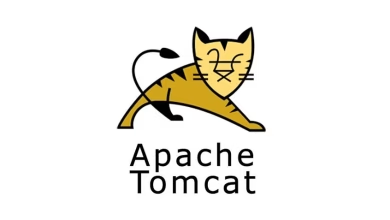How to Install FFmpeg on Ubuntu
How to Install FFmpeg on Ubuntu
FFmpeg is a powerful multimedia framework that allows you to record, convert, and stream audio and video in various formats. It is widely used by professionals and enthusiasts alike for tasks such as video editing, transcoding, and format conversion. In this comprehensive guide, we will walk you through the process of installing FFmpeg on Ubuntu, along with basic usage examples to help you get started.
What is FFmpeg?
FFmpeg is a free and open-source software project that provides libraries and programs for handling multimedia data. It supports a wide range of formats and codecs, making it an essential tool for anyone working with audio and video. With FFmpeg, you can easily convert media files, extract audio from video, create GIFs, and perform a variety of other multimedia tasks.
Step 1: Update Your System
Before installing any software, it’s essential to update your package list to ensure you have access to the latest versions. Open your terminal and run:
sudo apt update && sudo apt upgrade -y
This command refreshes your package index and upgrades any outdated packages on your system.
Step 2: Install FFmpeg
FFmpeg is available in the official Ubuntu repositories, making it easy to install. To install FFmpeg, simply run the following command in your terminal:
sudo apt install ffmpeg -y
This command will download and install FFmpeg along with any necessary dependencies. Once the installation is complete, you can verify that FFmpeg is installed correctly by checking its version:
ffmpeg -version
If the installation was successful, you should see the version number and configuration details for FFmpeg displayed in your terminal.
Step 3: Basic Usage of FFmpeg
Now that you have FFmpeg installed, let’s explore some basic commands to help you get started.
1. Converting Video Formats
One of the most common uses of FFmpeg is converting video files from one format to another. For example, to convert a video from MP4 to AVI, you can use the following command:
ffmpeg -i input.mp4 output.avi
Replace input.mp4 with the name of your source file and output.avi with the desired output file name.
2. Extracting Audio from Video
You can also use FFmpeg to extract audio from a video file. For example, to extract audio from an MP4 video and save it as an MP3 file, run:
ffmpeg -i input.mp4 -q:a 0 -map a output.mp3
Here, -q:a 0 sets the audio quality to the best possible, and -map a selects the audio stream.
3. Creating GIFs from Video
FFmpeg can be used to create GIFs from video files as well. To create a GIF from a portion of a video, you can use the following command:
ffmpeg -i input.mp4 -ss 00:00:05 -t 5 -f gif output.gif
In this command, -ss specifies the start time (5 seconds into the video), and -t specifies the duration (5 seconds). The output will be a GIF file named output.gif.
4. Video Rescaling
If you want to resize a video, FFmpeg makes it simple. Use the following command to change the resolution of a video:
ffmpeg -i input.mp4 -vf “scale=1280:720” output.mp4
This command resizes the video to 1280×720 pixels.
5. Merging Video Files
To concatenate multiple video files into one, you can use the following method. First, create a text file listing all the videos you want to merge:
file ‘video1.mp4’
file ‘video2.mp4’
file ‘video3.mp4’
Save this as file_list.txt. Then run:ffmpeg -f concat -safe 0 -i file_list.txt -c copy output.mp4
This command combines the listed videos into a single output file named output.mp4.
Step 4: Advanced FFmpeg Options
FFmpeg offers a wealth of advanced options and features. Here are some additional commands that can enhance your multimedia projects:
Changing Video Codec:
To change the video codec while converting a file, use the -c:v option:
ffmpeg -i input.mp4 -c:v libx264 output.mkv
Adjusting Bitrate:
You can adjust the bitrate to control the quality of the output file:
ffmpeg -i input.mp4 -b:v 1000k output.mp4
Adding Subtitles:
To embed subtitles into a video, use:
ffmpeg -i input.mp4 -i subtitles.srt -c copy -c:s mov_text output.mp4
Recording Desktop:
ffmpeg -f x11grab -s 1920×1080 -i :0.0 -r 25 output.mp4
Adjust the resolution and frame rate (-r) as needed.
Conclusion
FFmpeg is an incredibly versatile tool for anyone working with audio and video on Ubuntu. Its ability to handle a wide variety of formats and codecs, along with powerful command-line options, makes it an essential resource for multimedia tasks.
If you want, you can read our Handbrake article by clicking the link below. Thank you for visiting us.
How to Install HandBrake on Ubuntu and Other Linux Distros
By following the steps outlined in this guide, you should now have FFmpeg installed and be familiar with some basic commands to get started. Whether you’re converting files, extracting audio, creating GIFs, or performing more complex tasks, FFmpeg provides the flexibility and power you need to manage your multimedia projects effectively.





